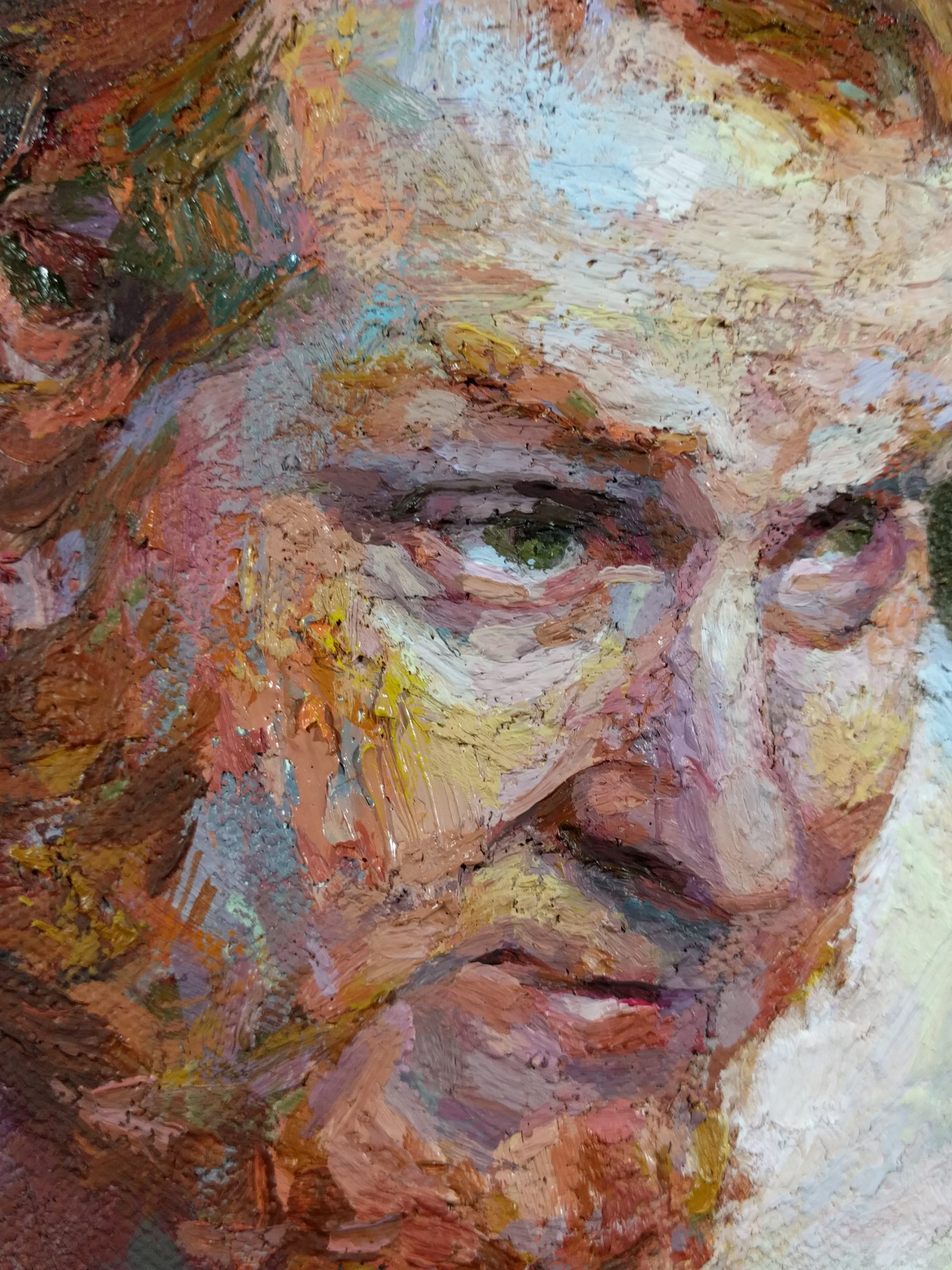Introducing the Secrets Behind Meaningful Figurative Oil Painting Styles
Introducing the Secrets Behind Meaningful Figurative Oil Painting Styles
Blog Article
The Function of Feeling and Expression in Figurative Oil Painting: An In-Depth Evaluation of Topic and Structure
The interplay of feeling and expression in figurative oil painting serves as an essential lens with which one can check out the complex connection in between subject matter and composition. Artists harness various techniques, from color selection to brushstroke dynamics, to cultivate psychological vibration within their works.
Recognizing Feeling in Art
Feeling in art functions as an effective channel for expression, enabling musicians to share complex sensations through their job. In figurative oil painting, this emotional deepness is commonly portrayed with the representation of the human number, recording the subtleties of human experience. The choice of subject, shade scheme, and brushwork all add to the psychological resonance of a piece.
Artists frequently draw upon personal experiences, social problems, or universal motifs to evoke feelings in the visitor. A picture may mirror susceptability, while a dynamic figure in activity can symbolize liberty or turmoil. These emotional threads connect the customer to the art work, cultivating a discussion that goes beyond the visual tool.
Additionally, the interplay in between light and darkness can intensify emotional strength, directing the customer's look and drawing attention to particular aspects within the structure. Making use of structure in oil paint further includes layers of complexity, inviting a tactile action that boosts the emotional experience. Overall, comprehending feeling in art is essential for valuing the subtleties that identify figurative oil painting, as it changes mere representation into a profound expedition of the human problem.
Key Aspects of Structure
In the world of metaphorical oil paint, the structure offers as the underlying framework that arranges visual aspects and improves the emotional narrative. Essential components of make-up consist of equilibrium, comparison, centerpiece, and rhythm, each adding to the general influence of the artwork.
Balance describes the distribution of visual weight within the paint, which can be attained with in proportion or asymmetrical setups. A well-balanced make-up gives stability, permitting the audience to engage with the piece harmoniously - figurative oil painting. Comparison, on the various other hand, entails comparing different aspects, such as dark and light or warm and amazing colors, to direct the audience's eye and stimulate psychological reactions
The focal point is crucial, as it directs interest to the most considerable part of the painting, frequently highlighting the emotional core of the story. By masterfully integrating these key aspects, artists can craft emotionally resonant and engaging metaphorical oil paints that captivate and engage their target market.
Topic and Its Influence
Topic plays an essential duty in figurative oil painting, as it not only acts as the structure for the narrative yet also forms the viewer's interpretation and psychological involvement with the artwork. The selection of topic-- be it a solitary figure, a team dynamic, or a thematic representation-- directly influences the psychological environment shared to the target market.

As an example, pictures typically stimulate individual links, revealing the ins and outs of human expression and character, while scenes depicting communal activities can develop a sense of belonging or fond memories. In addition, the historic and social context of the subject matter improves the visitor's he has a good point understanding, motivating much deeper reflections on social norms, worths, and the human condition.
Various subjects additionally generate differing levels of engagement; a significant dispute illustrated through figures in stress may evoke sensations of stress and anxiety or compassion, while peaceful landscapes can conjure up tranquility and reflection. Inevitably, the influence of subject matter in metaphorical oil paint is extensive, as it offers as a channel for emotional vibration, guiding the audience's feedback and interpretation, and promoting a link in between the artwork and the onlooker. This interplay is necessary for the successful interaction of the musician's intent.
Strategies for Evoking Feelings
The performance of figurative oil paint in communicating emotions is significantly influenced by the methods utilized by the artist. One of one of the most vital approaches is using color theory, where the critical selection of hues can stimulate particular psychological feedbacks. Cozy colors, such as oranges and reds, commonly evoke feelings of enthusiasm or aggressiveness, while cooler tones like blues and eco-friendlies often tend to stimulate calmness or sadness.
An additional necessary strategy is the manipulation of light and shadow, referred to as chiaroscuro. This approach boosts the three-dimensionality of numbers, developing remarkable contrasts that can heighten psychological depth. The placement of light can guide customers' feelings, highlighting particular components of the structure.
Brushwork likewise plays a critical duty; loose, meaningful strokes can communicate power and spontaneity, whereas smoother strategies may suggest harmony or accuracy. Furthermore, the plan of topics within the structure can affect psychological impact. Close distance can suggest intimacy, while distance may indicate isolation.
Eventually, the mix of these methods makes it possible for artists to craft narratives that reverberate with the customer, changing a simple aesthetic experience into an evocative psychological trip. - figurative oil painting

Study of Noteworthy Functions
Analyzing notable works of metaphorical oil painting exposes exactly how numerous methods are employed to evoke effective emotions. One excellent instance is Edvard Munch's "The Scream," where the altered figure and swirling history convey existential fear. Munch's use shade-- deep blues and brilliant oranges-- increases the psychological impact, showcasing just how palette options can form customer experience.
One more substantial job is Pablo Picasso's "Les Demoiselles d'Avignon." Below, fragmented forms and vibrant brushstrokes reflect a turbulent emotional landscape, challenging typical depictions click of the women number. Picasso's innovative composition not just records the audience's attention but additionally welcomes reflection on themes of identity and sexuality.
Furthermore, Frida Kahlo's "The Two Fridas" provides a poignant expedition of duality and self-identity. The contrasting numbers, connected by a common heart, exhibit Kahlo's emotional deepness and individual narrative. figurative oil painting. Her thorough attention to information and symbolic components offer to engage audiences on a visceral degree
These study highlight the extensive connection between emotion and composition in metaphorical oil paint, revealing how musicians harness technique to More about the author connect intricate feelings and narratives that resonate throughout time and culture.

Final Thought
Finally, the interplay of emotion and expression in figurative oil paint significantly improves the viewer's experience and analysis of the art work. Via a cautious choice of subject and compositional strategies, musicians share extensive narratives that reverberate on both universal and individual degrees. The application of color brushwork, theory, and chiaroscuro more enhances emotional depth, transforming each canvas right into a powerful reflection of the complexities of the human experience.
In metaphorical oil paint, this psychological depth is usually represented with the representation of the human figure, recording the subtleties of human experience.Additionally, the interplay between light and shadow can intensify emotional intensity, directing the customer's gaze and attracting interest to specific aspects within the structure. The use of structure in oil painting additionally adds layers of complexity, inviting a responsive reaction that enhances the psychological experience.The focal point is critical, as it directs focus to the most considerable part of the paint, frequently highlighting the psychological core of the narrative. Ultimately, the influence of subject matter in figurative oil paint is profound, as it offers as an avenue for emotional resonance, guiding the audience's action and interpretation, and fostering a link in between the observer and the artwork.
Report this page